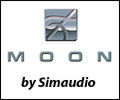 By Wes Phillips
By Wes Phillips
The Evening of Truth
It was billed as an "An Evening of Truth." Bösendorfer, the Austrian piano manufacturer, has begun building loudspeakers, and, as the press release put it, "because we know music," their New York showroom was putting on a concert featuring students from Juilliard and the Manhattan School of Music. The performances would be recorded and then played back on the spot through the Bösendorfer's new loudspeakers.
Live vs canned—that ought to be the acid test of audio reproduction, right?
It's not a new idea. That master showman Thomas Edison did the same thing more than 4000 times between 1913 and 1920, to promote his Disc Phonograph and vertically cut Diamond Disc recordings. Edison would rent concert halls and hire prominent musicians, such as British soprano Maggie Teyte, to appear in a series of comparisons. Ms. Teyte and the phonograph would both be hidden behind a curtain and, after what author Roland Gelatt refers to as "appropriate commentary from an Edison representative," Ms. Teyte would sing a song, a recording of which would then be played on the phonograph.
In his wonderful book The Fabulous Phonograph, Gelatt reports that these demos apparently convinced audiences, in the words of an Edison flack, "that there was no difference between Miss Teyte's voice and the New Edison RE-CREATION of it." These so-called Tone Tests sold a lot of expensive audio products. The Edison Disc Phonograph sold for $200 for the basic model and up to $800 for the fancy ones—this at a time when a really well-paid factory worker (say, at the Ford Motor Company) made about $5 a day.
Wait a minute, I hear you saying. People couldn't tell the difference between a scratchy old record and a live singer? Apparently not. Read and Welch's From Tin Foil to Stereo quotes a critic in The London Advertiser as saying, "The most sensitive ear could not detect the slightest difference between the tone of the singer and the tone of the mechanical device."
Of course, as Conrad-Johnson's Lew Johnson, an avid collector of early audio devices, points out, the demo was a leetle bit rigged. Vocalists were favored because that's the range the phonograph reproduced best—and even then, singers whose range fell right into the device's sweet spot (Ms. Teyte, for instance) were sought out. Also, Johnson suggests, the vocalists may have been trained to play to the phonograph's strengths.
The Bösendorfer event was a lot more straightforward. There was no curtain—everything took place out in the open, in Bösendorfer's piano showroom. The recording rig was first-rate: a pair of AKG 414 1"-diaphragm mikes on a stereo bar, feeding a Metric Halo ULN-2 two-channel microphone preamp-A/D converter, which used a FireWire link to feed the digital data to a 17" Apple PowerBook. Except for the AKGs, in other words, the system was remarkably similar to one John Atkinson used to capture a couple of channels of his latest recording of the male choir Cantus, Comfort and Joy: Volume One.
Playback was provided by Art Audio: Gill Audio Design Alana preamp ($4000), Adagio T100 45Wpc SE triode monoblocks ($23,000/pair), Synergistic Research Active Shielded speaker cables (approximately $7000 for the entire system's wiring)—and, of course, a pair of Bösendorfer VC-7 loudspeakers, designed by Hans Deutsch ($17,000–$20,000/pair, depending on finish).
My colleague Paul Messenger describes the Bösendorfer design concept at some length in the "Industry Update" section of the April 2005 Stereophile, so I won't go into a lot of detail here. The high spots are that the VC-7 is a tall, slim, rear-ported floorstander with two forward-firing, 1" fabric-dome tweeters on the front baffle, and two 5.25" midrange/woofers on each of its side panels. These are coupled to what Deutsch calls "horn resonators," essentially tuned vibrating soundboards designed to "function as active sound-producing diaphragms with no over-resonances."
Does it work? Based on the "Evening of Truth," I'd have to quote the Magic 8 Ball: "Reply hazy, ask again."
Is it live?
Before the formal demo, we all milled around the Bösendorfer showroom, chatting and gossiping—waaay off axis—as the crew performed a soundcheck and tweaked microphone locations. The air-conditioning was on (a room full of audio press gets more than its share of hot air), so there was lots of ambient noise. But occasionally my attention was pulled away from the milling throng to rivet on the speakers in the center of the room—there was something vital about the sound.
Sitting down and listening to the live/playback demo, things were different. We were very close to the musicians, who were very stage left, while the speakers were centrally located and farther away. There was no matching of levels. As a result, there were issues of localization and proximity that overwhelmed any similarities between live and playback.
Also, when you record sound in a room and then play that recording back in the same room, you're overlaying the room's acoustic with its simulacrum—and that's too much of a good thing. That night, the sound was blurred and hollow at the same time. And not only was I not in the sweet spot (that honor went to John Atkinson, in whose ears we trust), but I sit really tall in my seat. Unless I scrunched down considerably, my ears were well above the tweeter axis, which resulted in massive high-frequency drop-offs.
But even without making excuses for my placement, there was something off about the playback through the VC-7s. Certain frequencies were accentuated. The solo violin sounded duller, as though the string mute was now engaged. The cello sounded deeper and more resonant than it had live—"like a string bass," my friend Jeff Wong muttered in my ear. The piano had no sparkle on the top end.
And yet I heard flashes of excitement, too. There was extra energy in the presence region—not always, but here and there—that blurred the line between live and canned sound for moments at a time. And when we rose to mingle after the recital and were once more standing 30 feet to one side of the speakers, I heard it again when some CDs were played.
I don't mean to imply that the Bösendorfer VC-7s didn't sound good. It seemed to me that the demo made the case that they did. But I have a hard time comprehending how adding resonances is a good thing, especially after all the years I've spent convinced that speaker designers should go the other way.
I wonder, though, whether there aren't tons of people out there who don't like most speakers precisely because they do sound more like one another than like live music. We audiophiles think that sitting down and listening attentively is a normal activity, whereas most people put music on and do other things—talk, surf the Net, do crossword puzzles, cook dinner. Maybe those people would rather have a speaker that they notice from across the room, one that makes them lift up their heads and say, "Did you hear that?"
Just a thought.
Later that evening, I was having a burger at Skinflints (best burgers in Brooklyn) and talking with Jeff about the demo. "Since they recorded all of those performances onto the PowerBook, maybe you could get them to send you a CD-R of them so you could hear them on a system you know. That might make an interesting comparison."
D'oh! I really should have thought of that.
Lisa Feldman, Bösendorfer's PR rep, sent me a disc with the evening's music, which FedEx delivered as I was packing up the Coda amplifier I had been reviewing for the May issue for John Atkinson to test. I wanted to hear the CD immediately, so I listened to it on my "late-night" system: a Musical Fidelity X-RayV3 CD player ($999) and the Channel Island Audio VHP-1 headphone amplifier ($349).
The CD knocked my socks off. Removed from the Bösendorfer atelier's acoustic, the performances sound warm and intimate. The AKGs were set up fairly close to the instruments, so the direct sound is emphasized, but the room is audible, too. It causes me to suspect that the VC-7s almost certainly sound better than they did in the large showroom, so I won't pass judgment until I've heard them in a normal-sized living room. Maybe the speakers need sidewalls.
[Listening in the sweet spot, I was very disappointed with the Bösendorfers. The highs were very beamy in the vertical plane, and the speaker suffered from a colored, resonant lower midrange. Then I went to the bar to get a glass of wine; listening from way off-axis, a long way away, the speakers sounded more realistic on a piano recording than I think I have ever heard. A conundrum!—John Atkinson]
Feed Your Head
The $349 Channel Island Audio VHP-1 headphone amplifier is extremely impressive. It's tiny (4" W by 3" H by 4" D), with high bandwidth and extremely low noise. It's built around a newish surface-mount, current-feedback amplifier IC, which gives it a lot of grunt. It has a two-position gain setting that'll drive everything from my AKG-1000 to my Etymotic ER-4 headphones. (Its specs include an impedance range of 30–700 ohms.) There's also a unity-gain feed-through, so you can insert the VHP-1 in a tape loop or between your source and preamp.
You may not have heard of Channel Island Audio, but it's essentially Dusty Vawter, formerly of Audio Alchemy (and a good guy to contact if you need Audio Alchemy or Perpetual Technologies power supplies). CIA offers a lot of fascinating products, including a beefier $149 power supply for the VHP-1, which I haven't heard yet—but I will, I will.
That's because I love the VHP-1 and have been listening to it day and night—long after I'm supposed to have gone to bed. Last night, for instance, I got home late from a dinner with a manufacturer and thought I'd listen to just one song from the Dutch reissue of Gong's You (CD, EMI 66552 2), which was so charmingly strange and immersive that I fished out the DSD-remastered version of Brian Eno's Before and After Science (CD, Virgin 77292-2). Jaki Liebezeit's propulsive drumming on "Backwater" on that disc had me fishing out the SACD/CD of Can's Ege Bamyasi (Spoons A8). Floating along in a sonic universe that still sounds new 30 years after it was created, I completely forgot about the time (or planet Earth, for that matter) and wound up grooving all the way through.
What was so compelling? There was lots of detail, which you expect from good headphone listening. At the same time, the sound was warm and tonally spot-on. But what really impressed me was the jive and bounce of the music's rhythmic flow through the CIA component and my Sennheiser HD-650s.
Have you ever picked a ripe tomato right off the vine on an August afternoon and bitten into it right there in the garden? It's as if the skin offers only token resistance as the warm pulp and juice explode into your mouth with an intense burst of tomato essence. Listening to a good recording through the VHP-1 was like that—well, kind of, only in my ears, and not as messy.
After that kind of late-night listening session, there was no chance I was going to wake up early this morning and spot my workout buddy's massive bench presses (or have him spot my puny ones). Curse you, Dusty Vawter!
You can call Vawter at (805) 984-8282 or visit the Channel Island Audio website and get a VHP-1 of your own—there's no chance I'm letting go of mine.

 By John Atkinson
By John Atkinson
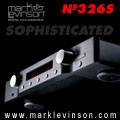
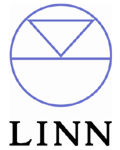
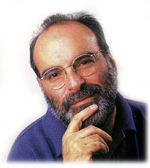 By Ken Kessler
By Ken Kessler
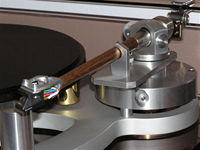 I own a Grace tonearm and anything about wooden armtubes pushes my buttons. I pressed further, and Burnham relented—but only a bit. "Regarding the basic components, the stainless-steel beam is seated directly on the hard points, which have a differing angle to allow for a full range of vertical movement. I have made these adjustable for height by a small amount and isolated the arm at this point. This seating in the beam allows no unwanted movement and is secured by the arm mass. The chosen point of axis uses this mass to provide damping in the vertical plane and again some adjustment, although 'very fine' is available. I hope this throws some light on the subject. I haven't got round to any proper drawings."
I own a Grace tonearm and anything about wooden armtubes pushes my buttons. I pressed further, and Burnham relented—but only a bit. "Regarding the basic components, the stainless-steel beam is seated directly on the hard points, which have a differing angle to allow for a full range of vertical movement. I have made these adjustable for height by a small amount and isolated the arm at this point. This seating in the beam allows no unwanted movement and is secured by the arm mass. The chosen point of axis uses this mass to provide damping in the vertical plane and again some adjustment, although 'very fine' is available. I hope this throws some light on the subject. I haven't got round to any proper drawings."
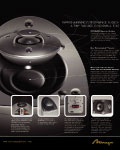
 By Wes Phillips
By Wes Phillips
